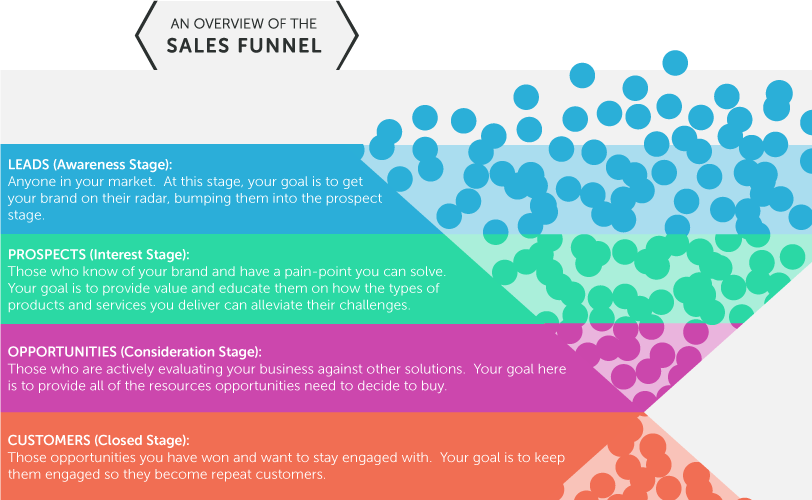The term “content marketing” was coined in 1996, but the strategy has existed for hundreds of years. However, some people are still trying to figure out how to use it effectively.
Content used to consist primarily of blog posts and guest-written articles. It was all about spreading thought leadership, and while that still is, and should be, a part of most content strategies, content marketing has evolved far beyond a simple piece of content.
Your content marketing strategy is more than just article creation and social media posts to distribute those articles. Media continues to expand, and numerous technological advances are changing how we consume content. As a result, your content marketing strategy needs to be robust and diverse.
Webinars, especially in today’s climate of remote work, are an effective tool for engaging potential customers and addressing existing customers’ questions and needs. They’re also a great way to generate leads and grow your email list, which feeds your inbound funnel and keeps it healthy.
In this article, we’ll discuss how webinars play a role in your content marketing strategy and how to use them for additional value, even after they’ve aired.

Get long-term ROI.
We help you grow through expertise, strategy, and the best content on the web.
What are webinars?
Let’s lay the groundwork by first identifying what webinars are.
Chances are you’ve attended a webinar in the past or have even hosted one yourself. Webinars are courses or learning sessions in which a speaker (or two or several) dives into a particular topic. These courses can be live or previously recorded.
Attendees register for these online events by filling out a form that typically asks them to input their names and email addresses. Registrants then receive a link that, when clicked, will let them into the webinar’s recording session. Webinars are virtual, so participants can tune in and participate from anywhere as long as they have an internet connection.
Webinar platforms
To create a webinar, you need to use webinar software. These exist on webinar platforms, and there are many available options. According to g2, the top three are:
- Zoho Meeting
- On24
- Livestorm
Each has exceptional reviews and scored in g2’s top 20 for ease of use. Zoho Meeting and Livestorm also have free trials, making them great choices for those new to webinar creation.
Why are webinars popular?
In 2021, 67% of marketers planned on increasing their webinar efforts.
Why?
Well, webinars offer registrants and hosts a variety of benefits, making them a popular piece of the content marketing puzzle. So let’s examine why registrants and hosts alike participate in webinars.
What do webinars offer registrants?
Education
People register for webinars for various reasons, but the most common reason is to upskill or learn something new. Therefore, most webinars focus on sharing knowledge from experts, the experts being hosts of the broadcast.
Sure, people can easily read an article on the same topic. But webinars offer visuals and a live narrator, which is much more engaging than reading words on a screen.
Some webinars may give registrants a walkthrough of a tool or platform or break down marketing strategies and industry news. Whatever the topic, webinars aim to share valuable information, making them appealing to registrants.
An easy way to consume information
In the current professional landscape, it can seem like there’s a new trend every day. Strategies constantly shift, and recent developments occur regularly. The search for industry education never stops, and it can be exhausting to keep up.
Webinars offer relief from reading endless text and there are dozens of webinar training tools that make its mess consumption possible. They allow you to learn more engagingly about what’s happening in your industry or about a particular topic. Simply put, webinars offer an easier way to consume content and come with visual elements that show instead of tell.
Real-time connection with brands
Brands can seem elusive and impersonal. With live webinars, registrants can ask questions and get immediate answers from a brand representative. Live webinars also provide a human connection with brands for registrants that they ordinarily wouldn’t have.
What do webinars offer the hosts?
Another audience touchpoint
The more touchpoints you have with your target audience, the more opportunities for your brand to build trust and stay top-of-mind. Webinars are great for getting another touchpoint without resorting to another email, cold call, or paid advertisement.
Brand humanization
A real person hosting your webinar is a great way to put a face to your brand. That kind of representation does a lot for breaking barriers and building trust with your audience.
Lead generation through brand partnerships
Brand partnerships are great for your marketing and sales strategies. By partnering with brands with a similar audience, you can tap into their networks and introduce your brand to them.
Webinars are a great way to foster these efforts. First, multiple brands with various industry experts can partner to discuss common topics on a webinar. Then they can promote the webinar to their respective audiences. Finally, the registration list becomes available to all participating brands.
Webinars go far concerning lead generation. Studies show 73% of all B2B webinar attendees turn into leads. Therefore, expanding your audience through brand partnerships is extremely worthwhile.
What role do webinars play in your content strategy?
Your content strategy is all about feeding and nurturing your inbound funnel. You use content through content management software to generate and nurture leads and eventually turn those qualified leads into customers. Webinars play a role in each stage of the funnel, and as a different way to consume content, they can help give any content strategy an added boost.
They help generate leads and feed your funnel

Every webinar you host should require names and email addresses in exchange for a link to the webinar. Having a registration form is fair (and standard practice), considering the high-quality insights contained in your webinar.
Don’t ask for too much information when creating these webinar registration forms. Also, ensure they’re GDPR compliant by confirming that when they provide their data, they give you permission to email them with marketing information. Or, you can simply include a checkbox that opts them into your email marketing.
Once they’ve opted into your email marketing, you can send them nurturing campaigns that educate them on your product or service offering. These campaigns help move them down the funnel closer to a sale.
They’re another form of content engagement
Instead of focusing on blog content and guest articles, webinars can be a great alternative to deliver content to your audience. You can easily create webinars by repurposing existing content.
For example, if a blog post on your site has high conversions or engagement rates, you can repurpose it, expand on it, and turn it into a future webinar.
They can turn leads into customers
Chances are that some of those who register for your webinar are existing customers. However, many are probably new leads, especially if you partner with another brand.
In that case, webinars are an excellent opportunity to turn those registrants into customers. Make sure you wow them during the webinar, and at the end, offer a demo or discount on your services to entice webinar registrants to become customers.
If that doesn’t work, don’t worry. If you’ve followed the tips mentioned above, you have their contact information and can send them content directly, showing them how your product or services can help them.
Since most webinars are live events, many marketers make the mistake of thinking there’s nothing more to do once they’ve aired. However, webinars can offer your content strategy tons of value long after their first broadcast.
How to capitalize on webinars after the broadcast date
Webinars require a lot of work, so you should get as much out of them as possible. Here are some ways to maximize the ROI on your webinars after the initial broadcast.
Add them to SlideShare
Tap into a wider audience by publishing your webinar to SlideShare. Doing this will increase your brand exposure in a big way.
Incorporate them into your drip campaigns
Drip campaigns are an essential component of your inbound marketing funnel. These emails are a series of outreach that nurture your leads based on various qualifying factors. These factors include where they are in the buyer’s journey, what they download on your website, which pages they visit, and how they interact with your email marketing.
You should revisit these campaigns every quarter to determine what to update. For example, as you continue to create more content, older content could get stale, making it necessary to swap it out for more current content. You can also share your recorded webinars in your drip campaigns so new leads can enjoy their value.
Add them to your resource page
Turn your webinar recordings into a lead-generating machine by putting them on your website’s resource page. All you need to do is gate access, and new visitors become leads for you to nurture through your funnel.
Use in webinar follow-up
Be sure to follow up with webinar registrants post-webinar. A follow-up means more than simply adding them to your drip campaign.
Create a thank you email to all webinar registrants the day after the webinar. In it, provide the broadcast recording and the slide deck so they have everything from the webinar. This extra step ensures they can take the webinar’s content, put it into practice, and provides you with an additional touchpoint and level of service.
Use as sales enablement
Great content gives your sales team the resources they need to sell better. So once your webinar airs, remember to share the link to the recording with them so they can share it with their high-priority leads. You never know, the webinar could relate directly to questions or concerns your sales team’s leads may be experiencing, and sharing the webinar could help them decide to partner with your brand.
Conclusion
If your content strategy consists solely of blog posts and the occasional guest-written article, you’re not doing enough. Keep in mind your audience wants to engage with your brand in different ways, and everyone prefers to consume content differently. So, give your audience options by looking into other ways to share quality content, webinars being one of them.
By creating webinars that your target audience values, partnering with brands with similar audiences, and maximizing the ROI after broadcasting, you can expand your brand awareness and generate more leads for your business. It’s time to recognize the webinar as the dynamic marketing tool it is. If you haven’t produced one yet, give it a try. You’ll be glad you did.




